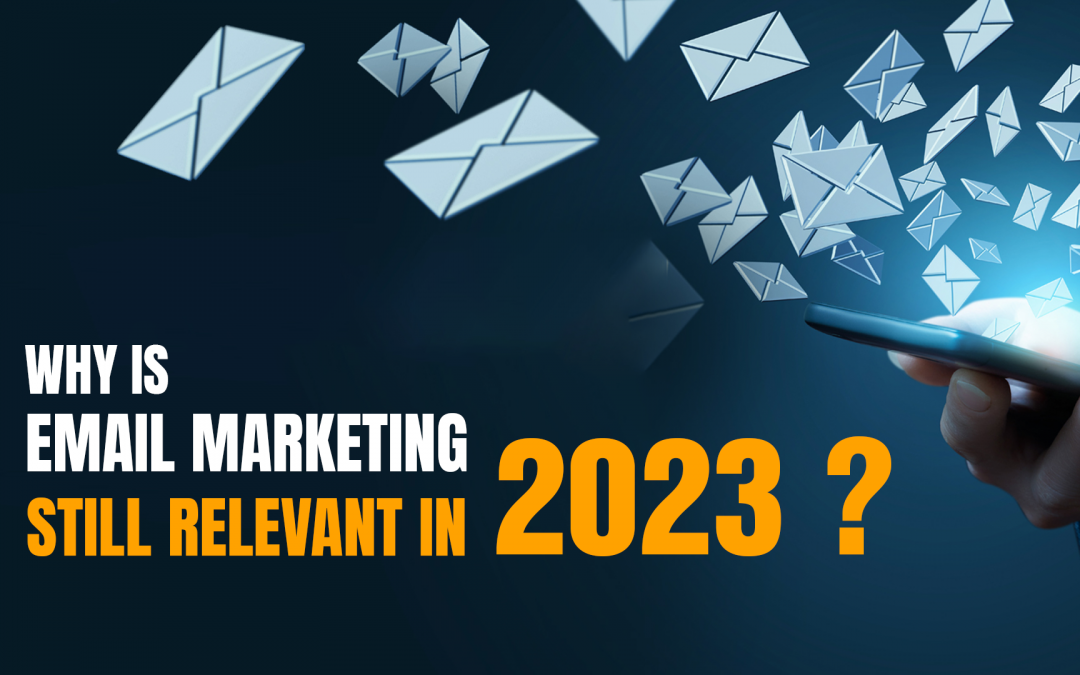Email marketing is a popular and reliable marketing method for businesses due to its stability, affordability, and control. Since email marketing is an owned media channel, marketers have greater control over the messaging and reach of their campaigns.
Although trendy marketing tactics like gamification and influencer marketing can be useful for engaging customers online, they often require a larger budget and may not generate enough conversions to make a significant impact. These strategies also fall under earned or paid media, which offer businesses less control and require more time and testing to see a positive return on investment.
Email marketing has over 4 billion daily users and presents businesses with more opportunities to connect with their customers at a lower cost. Most customers even prefer email over other forms of business communication, and sending weekly emails is considered the optimal frequency. Furthermore, email marketing continues to have one of the highest returns on investment among all marketing channels, and modern automation technology has made email campaign creation more efficient.
What Trends Are Impacting Email Marketing in 2023?
To ensure that your email marketing campaigns in 2023 effectively connect with customers and boost sales, it’s important to understand how the latest marketing trends can influence your approach.
1. Mobile Optimization: As of 2023, there has been a surge in mobile device usage, which has led to changes in the online landscape. The majority of email activity now comes from mobile devices, and if emails don’t display correctly on phones, 70% of customers will delete them. In some cases, customers may even unsubscribe if the email user experience is poor. Therefore, optimizing emails for mobile devices in 2023 is crucial for retaining your audience.
2. Customers Prioritize Social Responsibility: In modern times, Corporate Social Responsibility (CSR) has gained significant significance for businesses, with around 50% of Gen Z and 41% of Millennials preferring companies that take a stand on social issues. Email communication is an effective means of providing detailed information about a company’s CSR initiatives, such as brand values and social issue positions. Unlike social media, which has limitations on text length, an email newsletter allows for longer explanations, which increases the chances of the message being viewed by customers since it is delivered directly to them.
3. Sales & Marketing Alignment: According to a recent report, 54% of marketers are struggling to synchronize their sales and marketing teams. Surprisingly, only 19% of them plan to focus on improving this alignment in 2023. Failure to align these teams may result in inconsistent messaging and branding, so prioritizing sales and marketing alignment in 2023 could give your business an edge over competitors. Email is an excellent tool to address this issue since it can serve as both a sales and marketing platform. Sales teams can utilize email marketing for targeted content, deals, and direct product sales, while marketing teams can use it to build the brand. Creating a channel for collaboration between both teams via email can help ensure consistent messaging delivery to all customers.
4. Inbound Marketing: One of the most significant advantages of email marketing for businesses is that customers voluntarily sign up for email lists. In contrast, most traditional marketing is outbound marketing that can disrupt a customer’s media experience, contributing to ad fatigue. The digital landscape’s constant advertising makes it difficult to reach customers who may block or avoid ads, thereby reducing outbound marketing’s effectiveness. While email marketing can also involve outbound marketing, collecting email list sign-ups and newsletters is an inbound email marketing strategy where customers initiate engagement with the brand. This approach allows businesses to communicate with a willing audience that actively requests content. By providing content tailored to customers’ needs, businesses can build trust and foster brand loyalty over time.
5. Focus on Customer Service: Customers are more likely to make additional purchases from a company that provides good customer service, with 89% of consumers indicating their likelihood of doing so. Additionally, 78% of customers will continue to patronize a company even after a mistake has been made if they offer excellent customer service.

Email marketing is a crucial channel for customer service since it allows companies to stay in constant contact with customers during their buyer’s journey. Companies can improve the customer service experience by segmenting their audience and providing personalized, real-time communication such as product launches, limited-time offers, and birthday messages. Dynamic emails and retargeting emails can take personalized communication to the next level, addressing customers directly and resolving any issues quickly to make them feel valued.
6. Interactive Content: As the digital landscape evolves, businesses are turning to augmented reality (AR), virtual reality (VR), and digital games to create interactive experiences for consumers. However, there are also opportunities to incorporate interactivity into email marketing. A majority of consumers, 91%, now prefer interactive content in emails, yet few businesses are providing it. Incorporating interactive elements in emails can differentiate your brand from competitors and increase engagement and website traffic. Strategies could include embedding podcast episodes or video marketing content, adding buttons for related content, or using interactive images and infographics to showcase curated content.
7. Tighter Privacy Laws for Customers: Due to the increase of personal data being uploaded online, data privacy has become a more important issue. Recently, Apple’s mail privacy iOS update has given customers more control and privacy by allowing them to hide their IP and email addresses and prevent companies from tracking email open rates. As privacy features become more popular, customers are more trusting of and accepting of email as a marketing method compared to social media and banner ads, with a difference of up to 108%. Although the iOS update affects the ability to track open rates, there are still other ways to measure the success of email marketing campaigns, such as website traffic and conversions, click-through rates, and the ratio of unsubscribes to subscriptions.
8. Curated Content: In 2023, the vast amount of content available online makes it challenging for businesses to grab people’s attention, and it can be challenging to keep up with the volume of content creation. Curated content is an efficient way to stand out in this noisy digital world by collecting existing information and presenting it in a meaningful way. Email marketing is an ideal channel for sharing curated content as it allows businesses to feature blog posts, industry news, third-party research, videos, and podcasts, which can improve brand authority and educate the audience on topics relevant to the business. Since email marketing allows for more long-form content than other marketing channels, businesses have a better opportunity to delve deeper into the curated content.
9. Automation & AI: AI has become a valuable tool for marketers in recent years, especially in email marketing.

It can help with tasks such as organizing email lists, personalizing content to target specific audiences, and even writing emails. Popular email automation platforms such as MailChimp offer AI-powered software at little to no cost, allowing businesses to save time on email marketing tasks that would otherwise take up valuable resources. Automation also allows for better optimization of campaigns, enabling businesses to achieve better return on investment (ROI) within their budget constraints.
In conclusion, email marketing remains a popular and reliable marketing method due to its affordability, stability, and control, with over 4 billion daily users. Email marketing’s effectiveness is boosted by trends such as mobile optimization, social responsibility, sales and marketing alignment, inbound marketing, focus on customer service, interactive content, tighter privacy laws, and curated content. In particular, mobile optimization is crucial for retaining audiences, while incorporating interactive elements can differentiate brands and increase engagement. Additionally, companies should focus on providing excellent customer service and aligning sales and marketing efforts. Despite challenges in creating effective content, email marketing remains an essential tool for businesses to connect with customers directly and efficiently.
 Finland
Finland Bangladesh
Bangladesh
